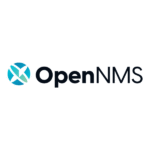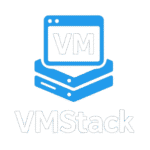System Administration Toolkit
IT Infrastructure Insights

StackStorm doesn’t try to be flashy. It doesn’t replace Ansible or Terraform. What it does is glue systems together in ways that react — not on schedule, not by button, but when something actually happens.

There comes a point — usually after the fifth or sixth time clicking through the same exact menu — when you start thinking: There’s got to be a better way to do this. That’s where Pulover’s Macro Creator quietly steps in.

Automagica isn’t for show. It’s for the scripts people kept emailing around, the ones nobody wanted to own. It takes those, makes them stable, and lets the team move on.

Veeam Agent Free doesn’t try to be cute. It skips the cloud, avoids the upsells, and gives admins exactly what they expect: scheduled backups that actually restore.

Zimbra OSE isn’t minimal. It’s not tiny. It’s a full-stack collaboration suite that happens to be open source — and it behaves like one. The setup takes time. The maintenance isn’t zero. But the result is a solid, standards-based, private email server that doesn’t need permission from the cloud to keep working.

CubicExplorer isn’t coming back. The dev blog is silent, the roadmap frozen. But the tool still works — and in some circles, that’s more impressive than whatever’s trending.

File Manager + doesn’t try to impress. It’s the tool that gets pulled up when something has to be moved, copied, fixed — and there’s no time for a desktop. It lives quietly in the drawer, next to the terminal emulator and the firewall app.

Tablacus Explorer doesn’t hold your hand. It won’t wow at first glance. But for anyone who’s wrestled with stock Explorer long enough, it feels like a toolkit — one that finally respects how someone works, instead of forcing them to adapt.

trolCommander isn’t trying to modernize file management. It’s not the future of anything. But for day-to-day, no-nonsense file operations across folders, archives, and protocols — it gets the job done, quickly and without drama.

LogAnomaly doesn’t promise full observability or endless insights. That’s not the goal. It just helps spot oddities early — before they snowball.

Shinken was born out of a simple frustration: classic Nagios couldn’t scale, and patching it didn’t get any easier. Instead of rewriting everything from scratch, the idea was to keep what worked — the config model, the plugins — and build a more flexible, distributed backend around it. In practice, that meant splitting up responsibilities into modules that could run on different machines, and moving the whole thing to Python.

LanTopoLog doesn’t try to be a NOC dashboard. It doesn’t graph bandwidth, monitor uptime, or aggregate logs. What it does is map physical connections clearly — so that when someone asks “where is this device connected?”, there’s an actual answer.

MeshCentral isn’t shiny. It doesn’t hold your hand. But it gives you the kind of remote access most commercial tools charge for — and more importantly, you’re the one in control.

OpenSnitch isn’t designed to replace a perimeter firewall or manage a fleet. But for single-node visibility — for knowing which process just reached out to an IP that never should’ve been touched — it’s one of the cleanest, quietest solutions around.

Cortex XDR Collector is not the face of anything. No one demos it. No one markets it. But without it, there’s no visibility. No timeline. No ground truth. Just guesses.

This setup doesn’t feel like a workaround — it’s more like the way containers should’ve always run on Windows. No VMs to babysit, no constant switching between OS contexts. Just one system that runs both sides well enough. It’s not flawless, but once in place, it rarely gets in the way. And that, for most people, is exactly what’s needed.



















